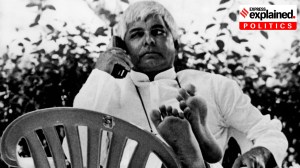Small traders main fake currency customers
The govt calculated the nature of the counterfeit business,pegging it at Rs 16,000 crore.
The governments secret report on the extensive circulation of Fake Indian Currency Notes (FICN) contains a large forensic section which has been prepared after 75 samples from 50 different seizures were examined at private and government laboratories. It reveals that FICN network operators have recently shown interest in manufacturing and supplying counterfeits of other currencies as well. Two currencies of particular interest to Pakistan-based FICN handlers are counterfeit US dollars in Pakistan and Jakarta and Nepali currency in Nepal, the report states.
It also mentions that there were serious attempts first in 2008 and then 2010 by Dawood Ibrahims primary associate Chhota Shakeel to establish a FICN printing machine in Nepal,but the plan had to be aborted since the mastermind,one Hamin Shah of Nepal,was shot dead in a gang war in February,2010 in Kathmandu.
The government has calculated the lucrative nature and economics of the counterfeit business,which it has pegged at Rs 16,000 crore of FICN circulation in 2010. Forensic experts have assessed that the original cost of producing a FICN 500 or 1000 is ICN (Indian currency note) Rs 39 per piece while the cost to the government is Rs 29 per piece. Therefore,selling an ICN 1000 for Rs 350-450 entails an instant profit of more than ICN 300 per note of FICN 1000 sold. This profit, the report notes,goes into the coffers of those running this ISI operation in Pakistan. There is roughly a 12 per cent mark-up at every level down the distribution chain,which covers cost of transportation,logistics and risk.
Interestingly,the government has identified the retail customer of FICN in India,for instance,the small mill owner and small businessman who primarily deals in cash in rural and semi-urban India. The method of introduction of FICN into the regular economy is to use it to pay daily wage labourers,farm labour and at weekly markets (haats) by slipping in one or two FICN into a wad of ICN the cardinal rule for infusing FICN into the economic process.
The government has listed more than a score differences between ICN and FICN (visible only on closer examination) which,for instance,include differences in features such as the Gandhi portrait in the water mark,the type of security thread and differences in the thickness of paper,nonetheless,there is a striking similarity in the printing process and raw material used.
Intelligence agencies have concluded that while in the initial years FICN was ferried into India directly via air,road and rail routes,a higher number of interdictions led to a shift in modus operandi. The new strategy,beginning 2000-01,was to develop deniability for Pakistan through a hub and spoke business model and therefore no recent FICN recoveries have been on Pakistan soil or at airports while emplaning,though 36 per cent seizures have been from couriers deplaning from direct flights out of Pakistan.
The analysis of the nationalities of those arrested with FICN consignments (of over Rs 10 lakh) reveals that over a five-year period (2006-2010),the highest cumulative recovery of Rs 11.5 crore was from Pakistani nationals in staging post countries. The second largest was Indian nationals,mostly in India (Rs 11.2 crore),the third Nepalese nationals who were arrested with Rs 7.12 crore and Bangladeshi nationals who were arrested with FICN valued at Rs 2.32 crore.



- 01
- 02
- 03
- 04
- 05




























